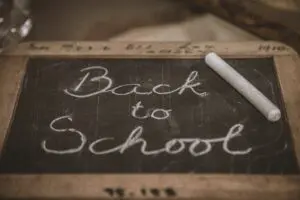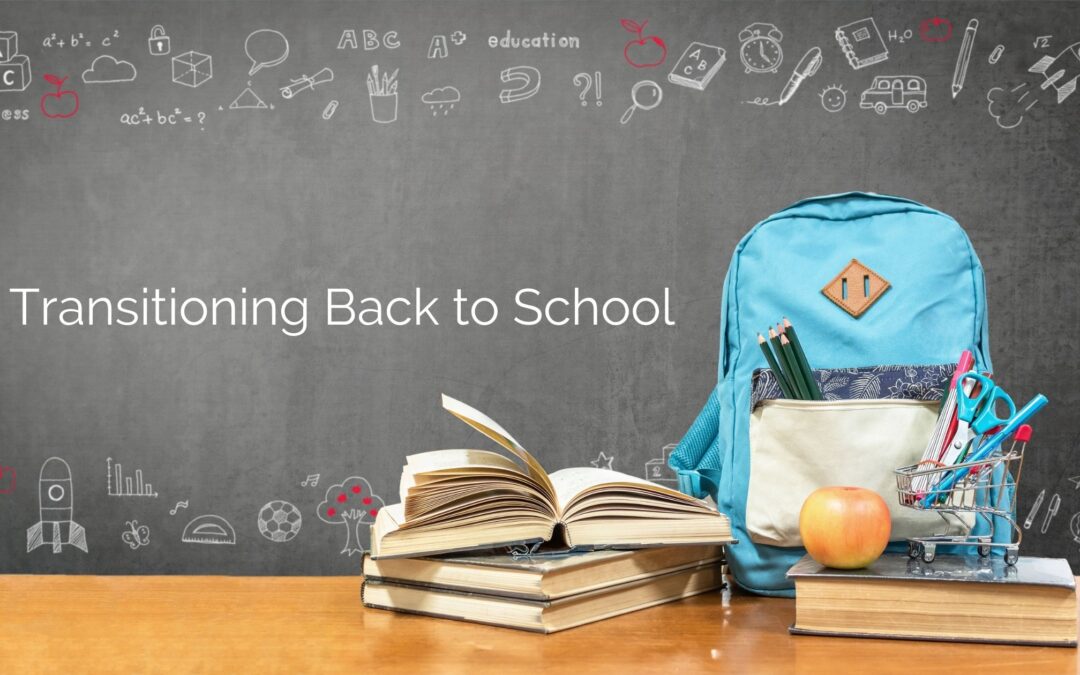I have had a lot of parents come to me over the past few weeks citing tough behavior in their children and worrying about transition back to school this year after the pandemic and ongoing delta variant concerns. While I do believe the chronic nature of the pandemic certainly took a toll, I believe we are simply hitting the time in the summer that most parents typically report an increase in their children acting out! This is usually the time, regardless of the pandemic or otherwise, that parents and kids alike start counting down the days until school starts. Kids start to have worse behavior as they tire of the summer routine, boredom sets in, and they sense the transition ahead. Families have spent an increased amount of time together and begin to wear on one another’s nerves and children miss their friends.

We are all feeling such a high degree of decision fatigue and general malaise that it could be tempting to run out the days of summer straight into the school year. This is especially tempting as school districts announce delays of the start of the school and continue to grapple with what learning will look like in the fall. While it is tempting to just keep going with what is working now (in fact that is a survival skill during times of chronic difficulty), I would strongly recommend building up to the transition back to school as I believe it will be an extra difficult transition this year. These are ways to ease the back-to-school transition:
-
- Pick a date to ratchet in a school-year bedtime routine. Re-familiarize yourself and your children with the bedtime routine. 10 days to a few weeks prior to the start of school, begin moving bedtime up by 15 minutes every few nights to get back to your typical fall schedule.
Set up a place in your home for school organization. If you are remote learning, then set up spaces in your home where each child can have access to a good place to work, the devices, school materials, snacks and water, etc. Make sure you are equipped with things like headphones and charging cables. Try to have this area as accessible to children as possible so that they can operate as independently as possible (especially if you are juggling working and remote schooling). Use your memory of school classrooms as a guide for organization. If you are in-person learning, then have homework spaces set up with materials and again consider having snacks and materials needed at home.
- Think through a routine that will work well for you and your family and take steps to implement this routine. Children thrive on structure and get a huge amount of structure from school. Consider having a daily schedule or an organizational tool to help everyone stay “in the know” while juggling everyone’s scheduled video calls and requirements. This should be posted for kids and adults alike. Build some connection time into the structure. Consider a time of day where the family can come together, even if for a few minutes. This could be anything from a 5-minute “hug break” to trying to coordinate lunch hours together. You can also consider a visual cue (i.e. green versus red sign on the door to your office) to your child of times it is fine for them to interrupt you versus times you need them to wait for questions or support.
Encourage “back to school” thinking. A few weeks before school begins, encourage critical thinking skills, have your children practice reading, writing, and math. Consider listening to an educational podcast together or helping them to research an interest of their choice.
- Discuss the logistics of returning to school with your children and make space for any related emotion. If you are remote learning, work to set expectations ahead of time with your children. Let them know what typical days will look like and the schedule of events. Talk to your children about your school’s plan for remote learning and show them how to use the technology they will be engaging in. Validate any and all emotion coming up for them about the plan and support them in asking questions and continuing to process. If you are in-person learning, be sure to address any concerns, fears, or questions they have. Discuss school policies on mask-wearing, one-way hallways, cohorts, etc. Validate any and all emotion coming up for them about the plan and support them in asking questions and continuing to process.
Have a final hurrah for summer day. One way to help in any transition is to bring ritual and honor the transition. Plan a family fun day with your children. You could do a carnival at home, a hike, a water balloon fight, etc. Have your children request activities, treats, music, etc. and help plan out the details. Make the day a celebration of the end of summer and a welcoming of the school year. Lead a discussion of the things you are grateful for about summer and what you are looking forward to about school.
Notice the behavior changes in your children as cues towards sensing the end of summer. With some increased purpose around the transition, we should be able to offset some of the problematic behavior and make everyone’s lives a little smoother.


 Set up a place in your home for school organization.
Set up a place in your home for school organization.  Encourage “back to school” thinking.
Encourage “back to school” thinking.  Have a final hurrah for summer day.
Have a final hurrah for summer day.